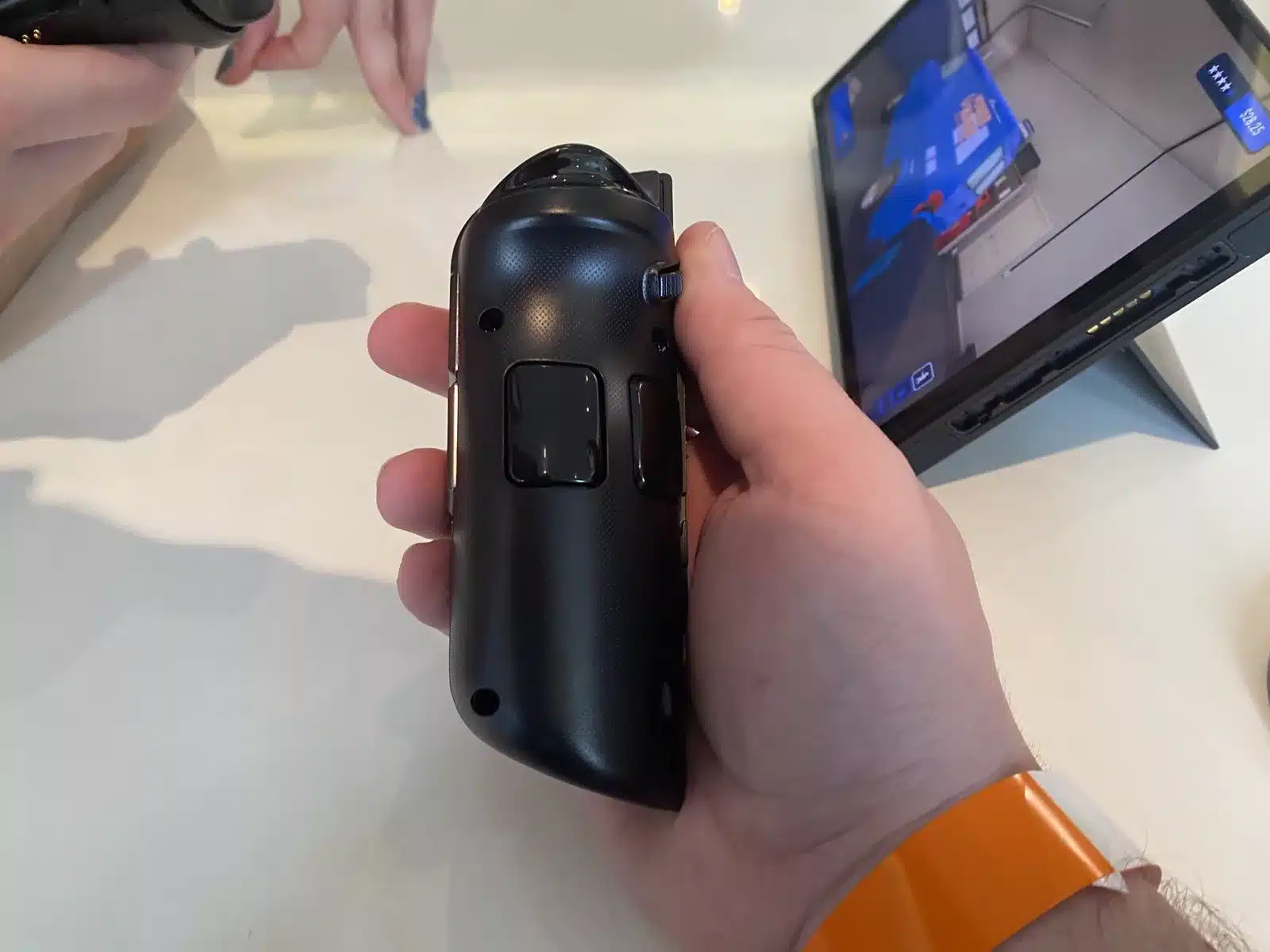Lenovo presented the Legion Go at the IFA 2023 in Berlin. With the handheld PC, they want to compete with Valve’s Steam Deck and the Asus ROG Ally. We were already allowed to try it out.
In practice, this means: The display in the middle is framed by two detachable controllers, which in addition to two joysticks also offer a whole series of freely assignable buttons and a touchpad – the latter, unlike the Steam Deck, only on the right controller.
We were able to try out the handheld computer in advance at a press event and have summarised our first experiences for you in this article.
First impression after half an hour
Fabrication & Design: From the outside, the Legion Go already makes a convincing impression – even if some components, such as the shoulder buttons, have not yet received the final polish. When I played it, for example, I was immediately impressed by the buttons with their pleasant tactile feedback, and I also had nothing to complain about with the joysticks.
On the outside, the Legion Go already makes a convincing impression – even if some components, such as the shoulder buttons, have not yet received their final touches.
For my rather large hands, the arrangement of the buttons was just right and, unlike other representatives of the handheld genre, the individual controls never got in each other’s way – joysticks and buttons were neatly separated from each other.
Controls: Where I would like to see Lenovo do some more work before the release is on the handheld’s touch field. This should make it easier to control shooters or strategy games, for example, which require more precise inputs. And for 4X titles like Civilization or casual shooters, that may be true.
But for faster titles like Counter Strike or Starcraft 2 the inputs were too imprecise – and sometimes the pad needed a second to register my finger movements correctly.
Lenovo Legion Go: What the hardware can do
Under the bonnet, Lenovo builds solid, if not earth-shattering hardware. The CPU in the form of the Z1 Extreme is also used in some versions of the ROG Ally.
Processor: AMD Ryzen Z1 Extreme
Graphics: AMD Radeon 700M
RAM: 16 GB LPDDR5X
Memory: up to 1 TB
The games I tested all came with fairly humane graphics requirements, so there’s little that can be said about the handheld’s actual performance so far.
For the 8.8-inch LCD display, Lenovo relies on QHD+ resolution, up to 144 hertz and a peak brightness of 500 nits. I didn’t notice the screen in a particularly negative or positive way during our half-hour of getting to know it. For a gaming handheld that is mainly used on the go, however, I chalk it up as a win overall.
Lenovo Legion Go: Price and Availability
The Legion Go is scheduled for release in autumn of this year. Lenovo lists a price of 799 euros as the RRP. In terms of price, this puts it slightly above the largest version of the Steam Deck and on a par with the Asus ROG Ally.
What do you think? Do you find the handheld shown by Lenovo exciting? Do you think handheld PCs like the Legion Go and the Steam Deck are a sensible invention? And would you like us to do a detailed review of the product at the time of release so that we can compare it directly with the competition? Write it in the comments!
The post After Steam Deck and ROG Ally: First impression of Lenovo’s new handheld PC appeared first on Global Esport News.


Deixar um comentário